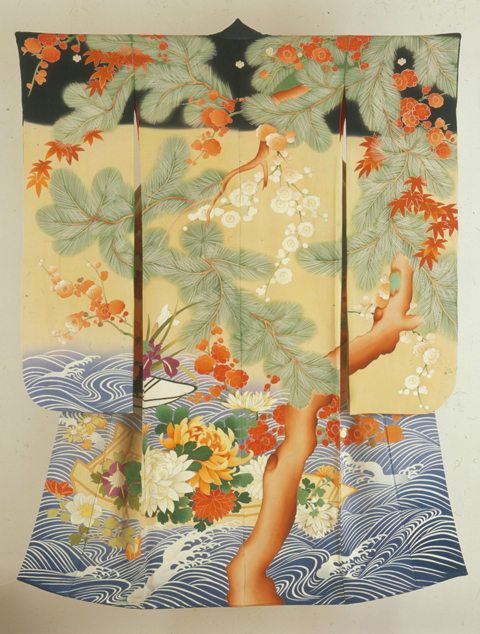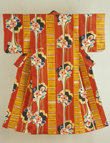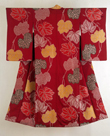
Fashioning Kimono: Art Deco and Modernism in Japan
June 6–August 16, 2009

The renowned Montgomery Collection of Japanese art (with over 1200 objects) represents one of the best collections of mingei folk art in the world. The collector,
Jeffrey Montgomery, also possesses an extraordinary collection of nearly 150 kimono dating from the late-nineteenth to the mid-twentieth centuries. This exhibition showcases over 70 garments comprising formal, semi-formal, and casual kimono as well as haori jackets and undergarments worn by women, men and children. While these garments reflect historical continuity in technique and form, many exhibit a dramatic break from tradition in design and motif.
The exhibition give a panorama view of one of the most dynamic periods in the history of Japan’s national costume, the first quarter of the twentieth century. That period was the final era of the “living” kimono when kimono remained the dress of choice, worn daily by the majority of people, especially women, in Japan. After this period, Western clothes came to replace the kimono as everyday wear, and eventually the kimono assumed the status of formal and ceremonial garment worn only on special occasions such as weddings and new year’s festivities. This trend continued into the late sixties when the impact of high economic growth generated a renewed interest in the nation’s national garment among the younger generation.
Interestingly, the kimono form has changed very little since its inception in the eighth century. It is unique to Japan, and its simple form serves both men and women in a variety of roles assumed throughout one’s life.
An individual fluent in the language of the kimono knows, at a glance, the gender, age, and social standing of the wearer, as well as the season and the occasion. A black kimono-haori jacket ensemble with family crest, made of habutae, a shiny, taffeta-like silk, would be worn by a man in formal occasions. A kimono made of rinzu, a soft, figured satin silk, and decorated with yuzen, a hand-painted rice-paste resist design embroidered in gold-wrapped thread, would be worn by a woman in formal and ceremonial occasions. The length of the sleeves indicate the woman’s marital status and the longer the sleeves, the younger the woman and unmarried. A somber-colored kimono made of tsumugi, an expensive, high-grade silk fabric made with hand-spun raw silk, would be worn everyday at home or for visiting by a middle-aged man or woman of good social standing. An indigo-and-white kasuri tie-dyed cotton kimono would be worn casually around the home or for running errands in the immediate neighborhood.


